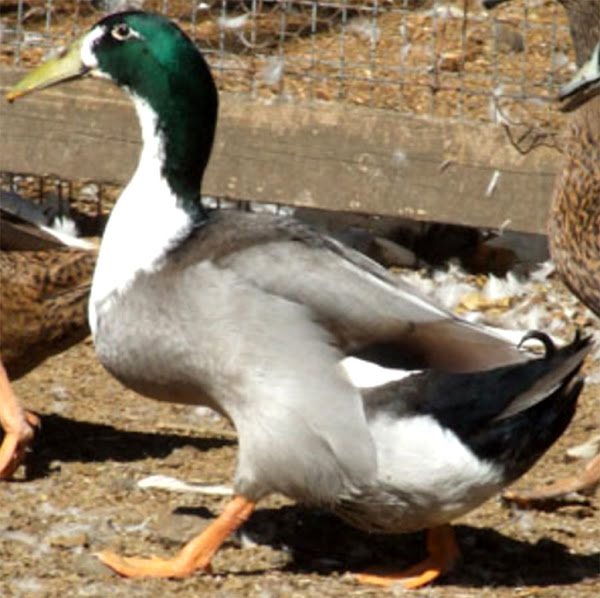The Hookbill or Dutch Hook Bill duck is a very old breed of domestic duck. It is one of the oldest European duck breed still in existence originating in the Netherlands.
The Hook Bill duck can be traced back to the seventeenth Century in the Netherlands. And the breed was traditionally raised along canals in the Netherlands, as an egg layer breed and was very popular.
But the population of the Hook Bill duck has reduced immensely since eighteenth Century. And today the breed is raised for laying eggs and also for exhibition. The name of the Hookbill or Hook Bill duck refers to it’s distinctive Roman nosed beak.
It is also called by some other names such as Kromsnaveleend or Noord-Hollandse Krombek End in Dutch. Exact origin of the Hook Bill duck has never been determined, and nobody really seems to know where the Hook Bill duck breed came from.
But it is speculated that it developed from early importations of the Indian Runner ducks. Dutch historians and other people said this duck must have been originating from East Asia, somewhere around India where it was reared for food and eggs.
This duck breed was first admitted to the British Waterfowl Standards in 1997, but not yet been admitted into the American Poultry Association’s Standard of Perfection.
Hook Bill Duck Characteristics
Hook Bill duck is a light weight breed of domestic duck. It is characterized by it’s downward curving beak, setting it apart from other domestic duck breeds. This unique appearance has made the breed desirable as ornamental birds today. But previously they were known for being excellent egg layers.
These ducks are related to goose and swans, but are smaller with shorter wings, neck and a stocky body. There are many color varieties available of this duck breed. The Dusky (or Dark) Hook Bill duck is in shades of gray-brown.

The White-Bibbed variety is similar to the Dusky, but has a large patch of white on the front and primary feathers. An entirely White variety is also available. Average body weight of these ducks is between 2.3 and 2.8 kg. Photo from The Livestock Conservancy.
Uses
Previously the Hook Bill ducks were raised as an utility bird, used for both meat and eggs production. Today the breed is mainly raised as an egg laying duck breed and also used for exhibition purpose.
Special Notes
The Hook Bill ducks are docile, strong and very active birds. They are excellent foragers and great flyers. Their excellent foraging capability made them very widely popular duck breed in Dutch farms.
The Dutch farmers used to release their ducks in the mornings to fly off, the ducks find their own food and return in the evenings. So they are very economical breed of duck for the farmers.
This is a seasonal egg layer of large blue eggs. And they lay about 100 to 200 eggs per year. Ducks tend to go broody and are good mothers. Review full breed profile of this duck breed in the following chart.
| Breed Name | Hook Bill |
| Other Name | Hookbill, Kromsnaveleend or Noord-Hollandse Krombek End in Dutch |
| Breed Purpose | Eggs, Exhibition |
| Special Notes | Active, Docile, Excellent Foragers |
| Breed Class | Light |
| Broodiness | Good |
| Drake | 2.3 to 2.8 kg |
| Duck | 1.6 to 2.3 kg |
| Climate Tolerance | All Climates |
| Egg Color | Blue, Blue-Green |
| Egg Size | Large |
| Egg Weight | Up to 65 grams |
| Egg Productivity | Medium |
| Flying Ability | Excellent |
| Rarity | Common |
| Varieties | Dusky, White-bibbed Dusky, White |
| Country of Origin | Netherlands |





